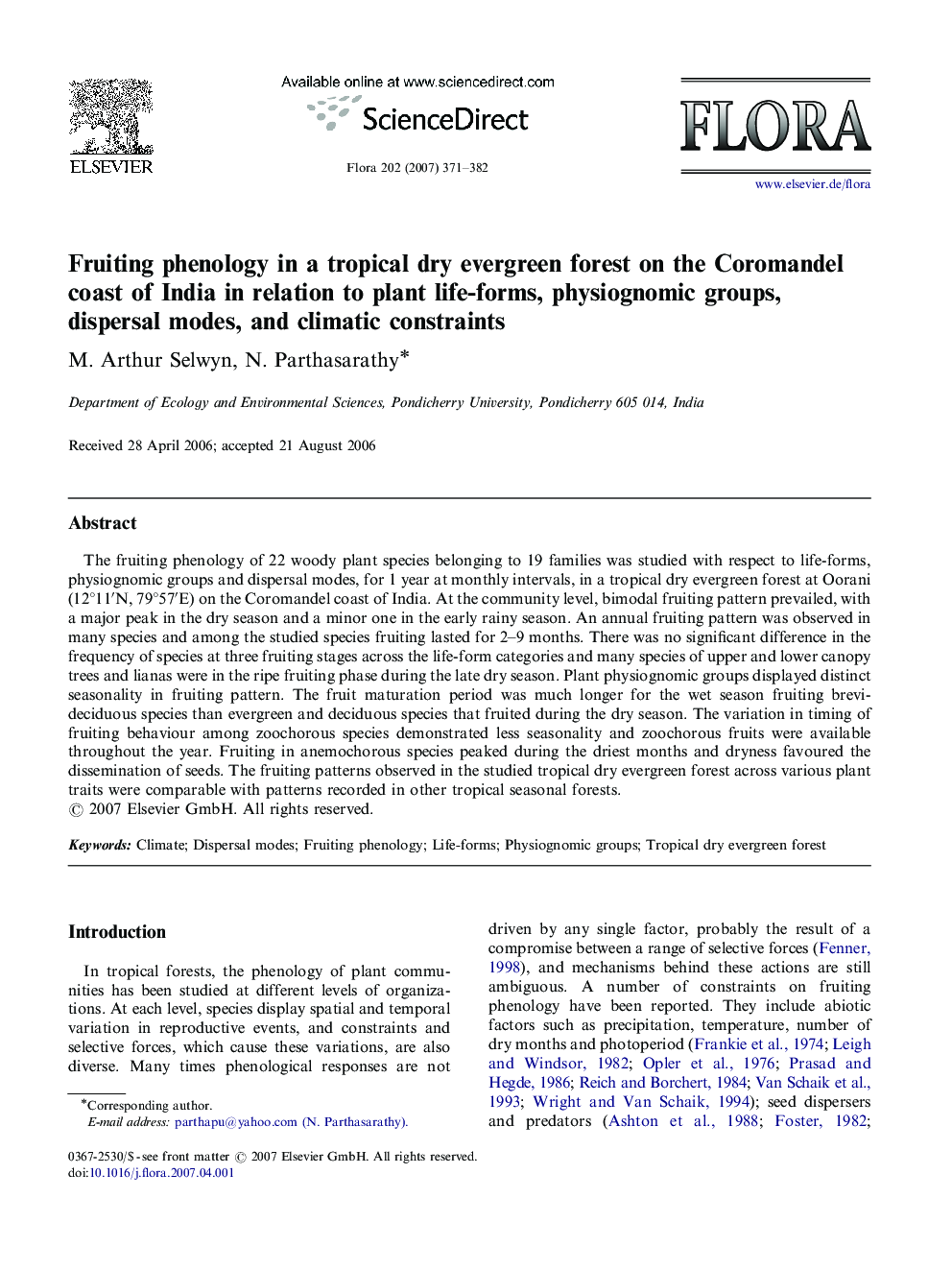| Article ID | Journal | Published Year | Pages | File Type |
|---|---|---|---|---|
| 2180257 | Flora - Morphology, Distribution, Functional Ecology of Plants | 2007 | 12 Pages |
The fruiting phenology of 22 woody plant species belonging to 19 families was studied with respect to life-forms, physiognomic groups and dispersal modes, for 1 year at monthly intervals, in a tropical dry evergreen forest at Oorani (12°11′N, 79°57′E) on the Coromandel coast of India. At the community level, bimodal fruiting pattern prevailed, with a major peak in the dry season and a minor one in the early rainy season. An annual fruiting pattern was observed in many species and among the studied species fruiting lasted for 2–9 months. There was no significant difference in the frequency of species at three fruiting stages across the life-form categories and many species of upper and lower canopy trees and lianas were in the ripe fruiting phase during the late dry season. Plant physiognomic groups displayed distinct seasonality in fruiting pattern. The fruit maturation period was much longer for the wet season fruiting brevi-deciduous species than evergreen and deciduous species that fruited during the dry season. The variation in timing of fruiting behaviour among zoochorous species demonstrated less seasonality and zoochorous fruits were available throughout the year. Fruiting in anemochorous species peaked during the driest months and dryness favoured the dissemination of seeds. The fruiting patterns observed in the studied tropical dry evergreen forest across various plant traits were comparable with patterns recorded in other tropical seasonal forests.
